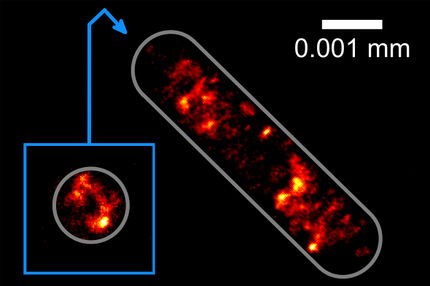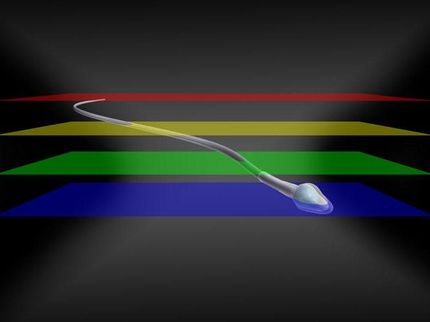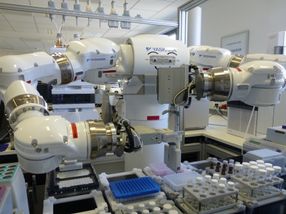ZEISS microscope developers win the Deutscher Zukunftspreis 2022
The development of the ZEISS Lattice Lightsheet 7 for the gentle 3D imaging of living cells was honored with the Federal President's Award for Technology and Innovation
The President of Germany, Frank-Walter Steinmeier, awarded the Deutscher Zukunftspreis 2022, The Federal President's Award for Technology and Innovation, to the team from ZEISS during a festive ceremony. The jury recognized the ZEISS experts Dr. Thomas Kalkbrenner, Dr. Jörg Siebenmorgen, and Ralf Wolleschensky for their significant contribution in the development of the microscope system ZEISS Lattice Lightsheet 7.
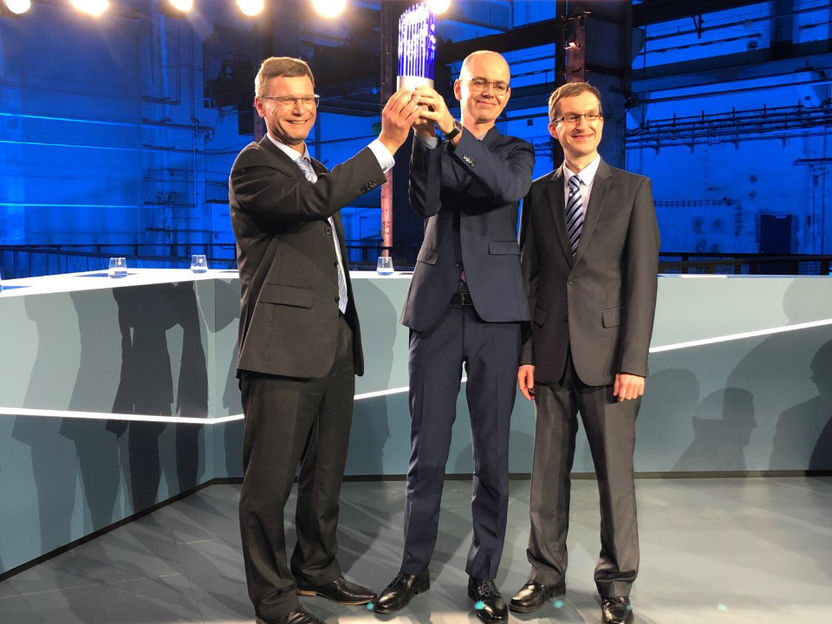
ZEISS microscope developers Ralf Wolleschensky, Dr. Thomas Kalkbrenner and Dr. Jörg Siebenmorgen (from left) win the Deutscher Zukunftspreis 2022 for the development of the ZEISS Lattice Lightsheet 7.
ZEISS
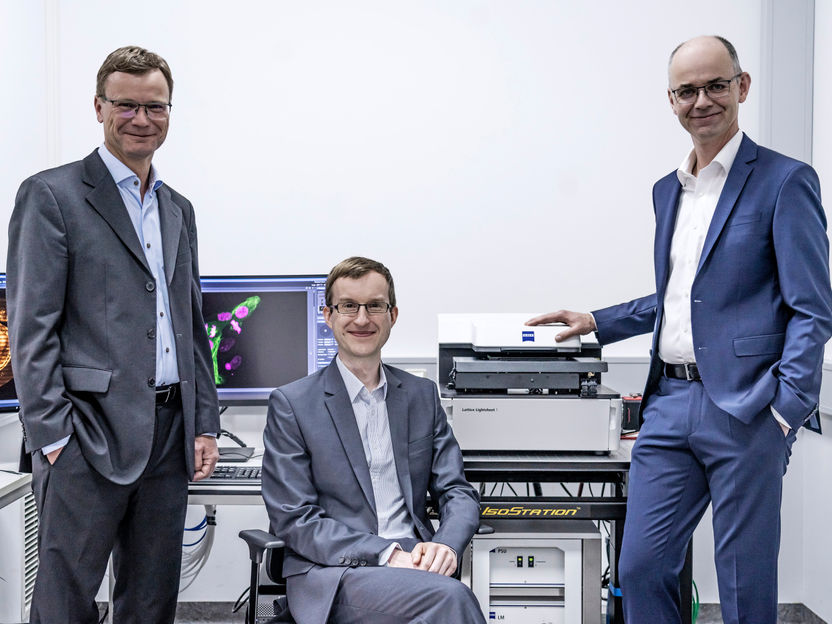
ZEISS microscope developers Ralf Wolleschensky, Dr. Jörg Siebenmorgen and Dr. Thomas Kalkbrenner (from left) win the Deutscher Zukunftspreis 2022 for the development of the ZEISS Lattice Lightsheet 7.
© Deutscher Zukunftspreis / Ansgar Pudenz
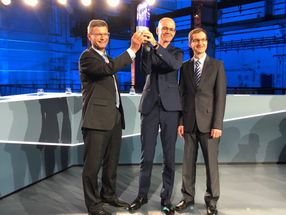
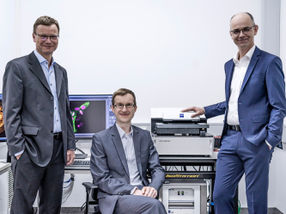
"We're delighted to have received the Prize and are very proud of the team behind the extraordinary development of the ZEISS Lattice Lightsheet 7," states Dr. Jochen Peter, member of the executive board of the ZEISS Group. "At the same time, the prize is a welcome confirmation of our company's innovative strength – this effectively promoting economic and social progress in equal measure."
With this award, the German President honors scientists for exceptional achievements in technology, engineering and the life sciences as well as software- and algorithm-based achievements that have resulted in viable products. It has a cash value of EUR 250,000. In addition to scientific excellence, the winning projects present a clear and recognizable benefit for society, the environment, and the economy.
Exploring the living cell
ZEISS Lattice Lightsheet 7 enables, for the first time, biomedical researchers to observe living cells live and in 3D for hours or even days. They study how, for example, the cells react to certain active agents, or what happens when viruses or bacteria enter cells. The problem for researchers studying living cells with fluorescence microscopes used to be the illumination: the intensities of the laser radiation used are higher than those of the sun by a factor of 1000 or more. This intense illumination can permanently damage living cells. A significant reduction in this photo damage is achieved with light sheet microscopy: unlike all other microscopes, the laser beam – in the form of a light sheet – is applied only in the area of the sample that is in the focus of the objective lens.
To do this, the team had to tame the laser in a special way and completely rearrange the objective lenses because the cells grow on the cover slips in culture vessels like Petri dishes or multiwell plates. They developed a completely new type of microscope optic that enables a person to look through the sample vessels ‒ at an angle and from below ‒ at the cells inside without artifacts. All this has been developed into an easy-to-use, compact system with high potential for automation.
Innovation as part of the corporate identity
ZEISS has been nominated for the Deutscher Zukunftspreis multiple times. Two teams were even nominated in 2020. The ZEISS, TRUMPF and Fraunhofer research team was awarded the 2020 the Federal President's Award for Technology and Innovation for the development of EUV lithography.
Innovation is a way of life at ZEISS. You might say it is in the company's genes. As part of corporate strategy, it is always associated with society as a whole – where it forms the basis for further growth within the ZEISS Group. That is why ZEISS invests 13 percent of its revenue in research and development work.
Optical technologies are vital when it comes to making progress in the life sciences, medicine, IT, telecommunications, automotive, consumer and many other fields. All ZEISS innovations aim to meet future customer needs with products, services, solutions and business models as well as offer added value and benefits.
Other news from the department research and development
Most read news
More news from our other portals
See the theme worlds for related content
Topic World Cell Analysis
Cell analyse advanced method allows us to explore and understand cells in their many facets. From single cell analysis to flow cytometry and imaging technology, cell analysis provides us with valuable insights into the structure, function and interaction of cells. Whether in medicine, biological research or pharmacology, cell analysis is revolutionizing our understanding of disease, development and treatment options.
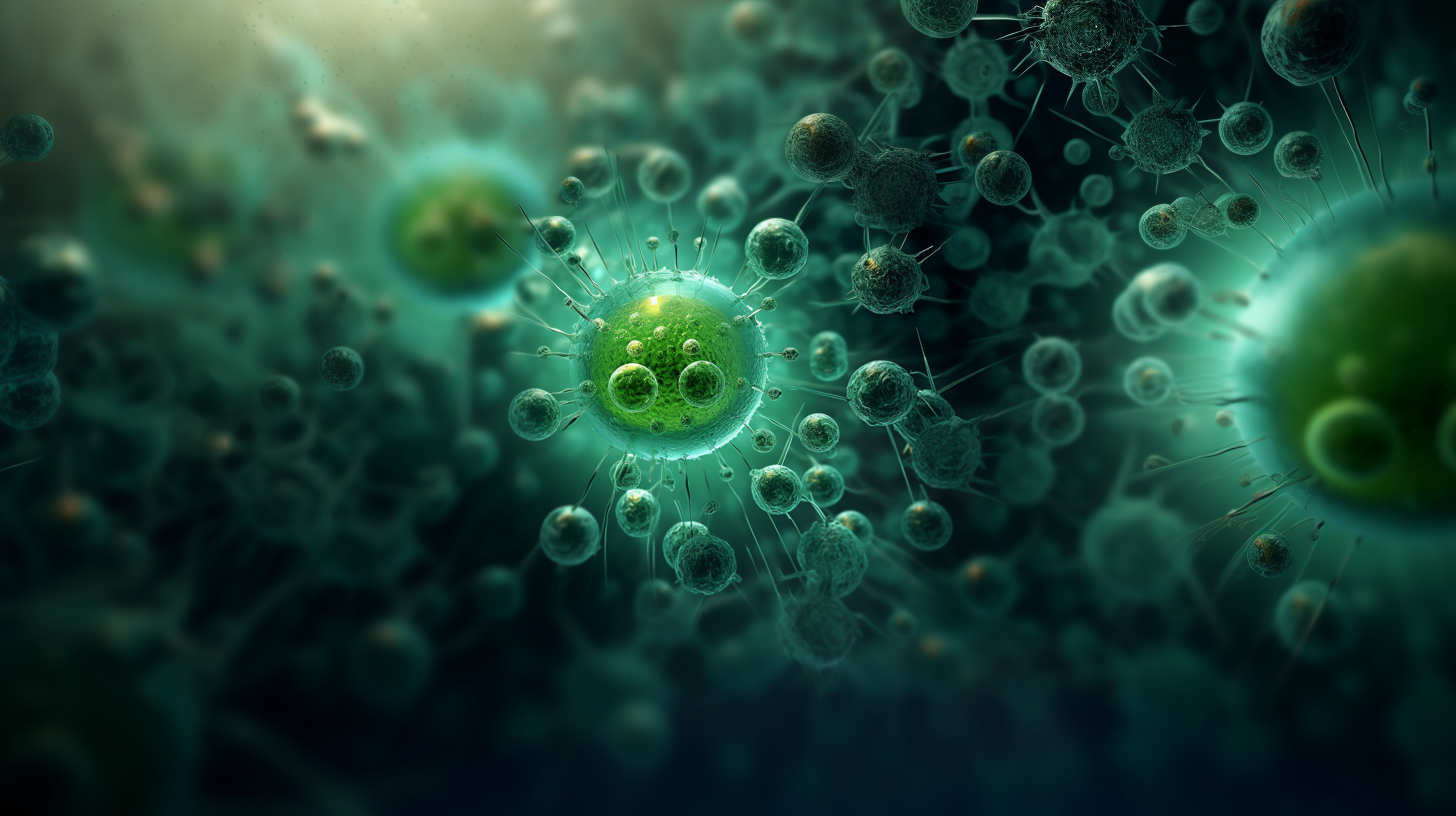
Topic World Cell Analysis
Cell analyse advanced method allows us to explore and understand cells in their many facets. From single cell analysis to flow cytometry and imaging technology, cell analysis provides us with valuable insights into the structure, function and interaction of cells. Whether in medicine, biological research or pharmacology, cell analysis is revolutionizing our understanding of disease, development and treatment options.
